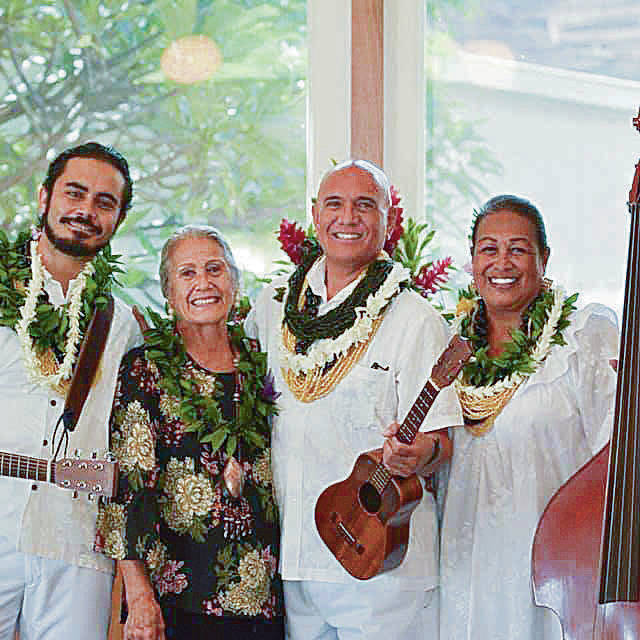Kimo Alana Keaulana grew up in Honolulu speaking Hawaiian at a time when most Native Hawaiians outside Niihau only spoke English. He studied hula when most people thought hula was for women only. Keaulana studied Hawaiian for four years at Kamehameha Schools, but when he went to the University of Hawaii at Manoa expecting to learn more about the language, he was told he was too fluent to take classes; he studied Samoan instead.
In the years that followed, Keaulana has shared his knowledge of Hawaiian language and culture as an entertainer, a recording artist and as an educator teaching university-level language and music classes. He released his first album, “Cha-Lang-A-Lang Today,” in 1978, as the leader of a group named Halona. He founded a second group, Lei Hulu in 1992 and released “Lei Hulu Sings for the Hula” the following year.
Lei Hulu’s long-awaited second album, “Hula Lives!” was released in 2004 and received two Na Hoku Hanohano Awards — Best Hawaiian Language Performance and Haku Mele for his composition “Kinoike Kekaulike” — in 2005.
Keaulana received the Hawai’i Academy of Recording Arts Lifetime Achievement Award in 2018.
Keaulana, 65, was appointed to the King Kamehameha Celebration Commission earlier this summer with a blueprint for changes in hand.
What are your plans for 2021?
We need to get our island floats (representing the different islands) back in the parade. For decades the Kamehameha Day parade (on Oahu) was known for its island floats — and the music and the dancing and color and all of that. My biggest thing is to get those floats back in the parade. The whole spirit of the music and dance (on the floats) is so wonderful, and people coming together to build them. It’s a great, wonderful thing.
How are things going?
The response has been overwhelming. People do miss it and they do want it. I got two commitments in the first week.
What else have you been working on this summer?
Just trying to figure out how we’re going to be teaching school (at Punahou) in the fall.
Going back to the beginning, who was your “hula mother” who became your guide and teacher?
Adeline Lee. She was (also) the president of the Kapahulu Music Club, and then it went to her daughter, and then eventually it came to me. I inherited all of her stuff, including her stuff from the Kamehameha Day celebrations. She was in charge of the lei draping (of the Kamehameha statue) and so I have boxes and boxes.
What was the rationale for the University of Hawaii not allowing you to study Hawaiian?
I was classified as a native speaker ‘cause I’d grown up with Hawaiian and English at the same time. At that time, if you were a native speaker of a language — except for English — you could not take that language.
How unusual was it for someone in their late teens to be a native speaker?
It was really unusual because I was not from Niihau. Anybody from outside Niihau that spoke Hawaiian — that was highly irregular. I never really gave it a second thought until years later.
It is always a wonderful surprise to find you playing the cocktail hour at some big cultural event, but it always occurs to me that only in Hawaii would you be background music. Are we spoiled here?
It’s a different mindset. We take a lot of things for granted in Hawaii.
For more information on the King Kamehameha Celebration Commission, call 586-0333 or email kkcc@hawaii.gov.

